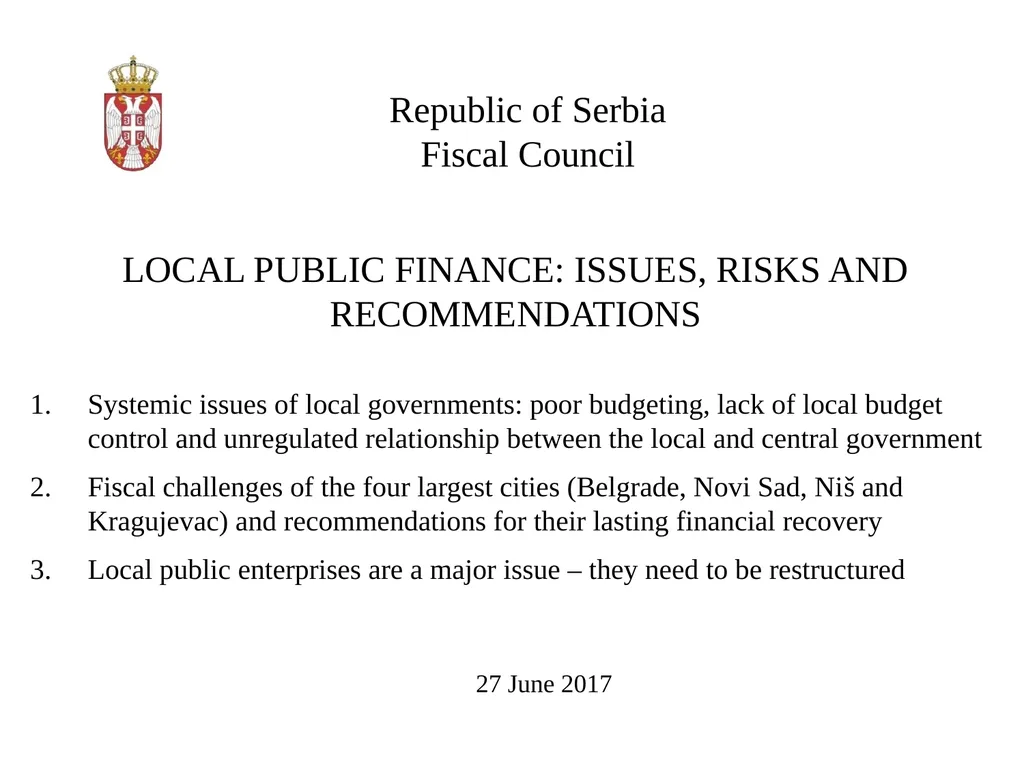
Republic of Serbia Fiscal Council 27 June 2017
Author: natalia-silvester | Published: 2025-05-29
Description: Republic of Serbia Fiscal Council 27 June 2017 LOCAL PUBLIC FINANCE: ISSUES, RISKS AND RECOMMENDATIONS Systemic issues of local governments: poor budgeting, lack of local budget control and unregulated relationship between the local and
Download Presentation
Download the PPT/PDF: Download
Transcript:
Loading transcript…